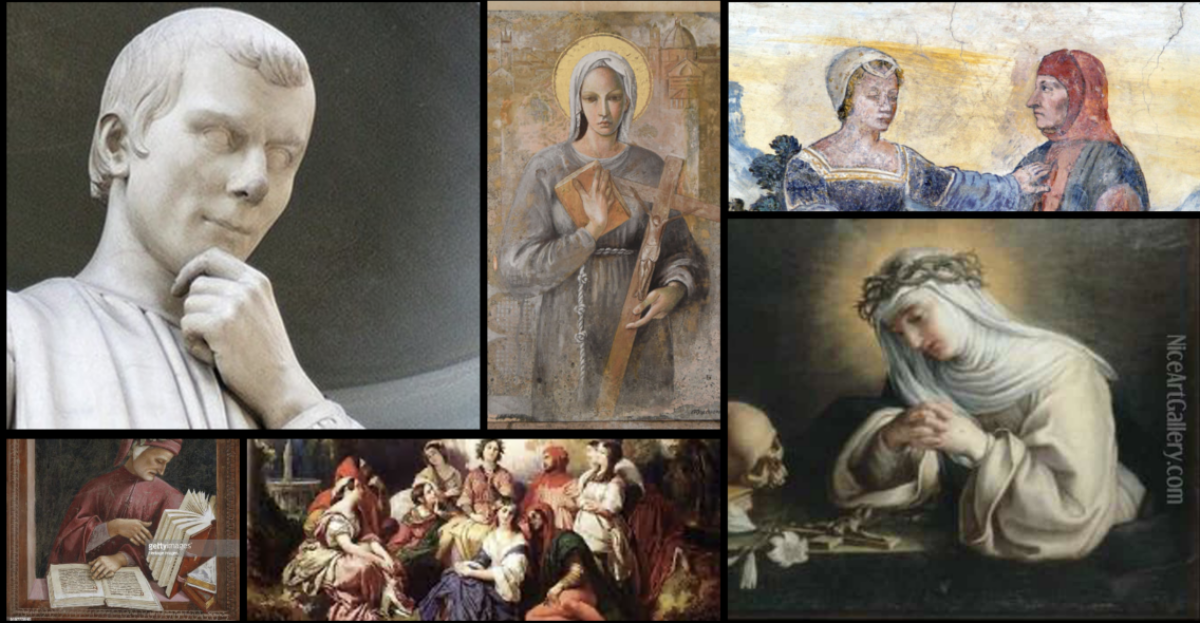
Poem 61 has an evident theme of love, especially within its first moments where Petrarca describes the emotions of when he fell in love with Laura. He expresses this theme of love throughout this poem and many others, through his uses of detailed imagery and hyperboles.
In the first stanza of this poem, Petrarca regards the very instant and place where he first met Laura as a blessing. He explains how he felt ‘bound’ to love after he laid eyes on her ‘two lovely eyes’. This same theme of being ‘bound’ to Laura’s love is evident throughout many of his poems, not just this one. He then continues to describe this love as his ‘first sweet agony’, and explains how he is now tied to this love.
In the second stanza, he uses metaphors to compare this feeling of love to being pierced through the heart with a bow, which left wounds so deep he feared they would “reach the bottom of his heart. By using this hyperbole, he gets the reader to understand his feelings of love, and how he fell so deep in love that it caused agony and pain, and ended up hurting his heart, and portrays the struggles he had to go through when it came to loving Laura. Petrarca also mentions many Roman gods throughout his poetry to get his points across. In this particular poem, he alludes to Cupid through the mention of bows and arrows to describe his love.
In the next stanza, Petrarca discusses all of his poetry, and the main catalyst for writing them. He states that all of his poetry was made to be a call out for Laura, and a way to express his love for her, and the feelings that came with it. He also talks about how this poetry was filled with ‘all the sighs, and tears, and the desire’ that came with loving her. By stating this, Petrarca gives the reader a good sense of what most of his poetry is about, and the feelings and emotions they can find within it. It also shows how he deeply cares for Laura to the point where he has to cry out her name and shed tears.
In the last and final stanza of this poem, Petrarca talks about how all of this paper he uses to write his poetry is blessed with Laura’s grace, as she is the topic for the poetry he writes about her. Petrarca also states how every thought he has only relates to Laura, and is not shared with anyone else.



